Healthy Innovation: An International Workshop held at the University of Manchester, July 8th-10th, 2004
Report by Andrew Webster
Joint organisers, The ESRC Centre for Research on Innovation and Competition, and the Centre for the History of Science Technology and Medicine with the support of the ESRC Programme on Innovative Health Technologies
Venue: The ESRC Centre for Research on Innovation and Competition, Harold
Hankins Building, University of Manchester, M13 9QH, UK.
Focus of the Workshop
The past two decades have witnessed a considerable interest in the processes of innovation in medicine and the consequences of medical innovation for human welfare. Medicine is a central element in the service economy and it is supported by an extensive medical industry and medical knowledge support system in all the advanced countries. This workshop sought to deepen and extend our knowledge of medical innovation processes from a comparative and historical perspective with a focus upon particular case studies of innovations, their genesis and application, the development of medical innovation systems and the evolution of medical innovation policies.
Some of the key themes delegates were asked to address include:
- Whether it is possible to identify generic and field specific obstacles to innovation
- Whether there are qualitatively distinct patterns of innovation emerge during the past decade as a result of the 'problems' medical science seeks to address?
- What 'progress' means in health innovation?
- How any critique might offer new directions for policy in regard to health innovation?
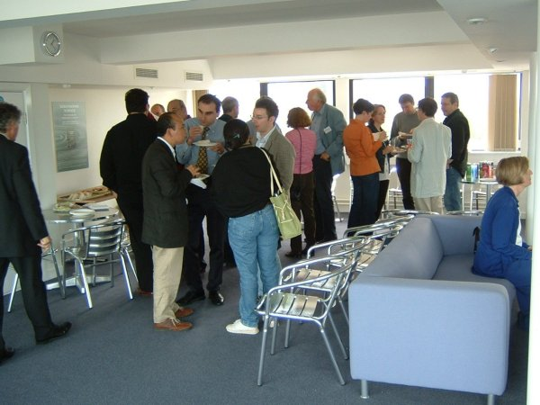
This brief Report identifies some of the key issues that emerged during the debate: it does not discuss the papers in detail. For those interested in exploring the ideas further, most of the papers are available on the website. The Conference title, Healthy Innovation, works in two ways: it asks us to consider and in so doing problematises the contribution made by science and technology to the delivery of health itself, and thereby, asks how technological innovation may be fostered in ways that are both more effective and efficient with regard to securing this public good. The first theme is, of course, a long-standing debate in critical social science and history, emblematically figured in McKeown's (1979) seminal work on the limited contribution that medicine has made to population health. The second theme has only recently begun to be explored as the analyses of innovation theory are applied to the development and take-up of health technologies. In this regard, a classic parallel to that of McKeown is Roger's (1983) 'diffusion theory' which focuses our attention of five factors shaping the perceived merits and so likely adoption of new clinical technologies, namely their 'relative advantage', 'compatibility', 'complexity', 'trialability' and 'observability'.
Some might still be argue that the technologies we have are those that simply work the best and are not thereby socially shaped, but technically self-selected. However, as the contributions to the Workshop all demonstrated - whether in their exploration of vaccines, assistive and prosthetic technologies, telemedicine, cardiovascular, ocular, bioscience and pharmaceutical innovation - the meaning of technical/clinical efficacy and effectiveness, has to be demonstrated as such, has to be legitimated as such, and cannot speak for itself. It may well be the case that some technologies - such as those we find in global communications systems- exhibit a strong directionality or 'path dependency' as alternative options get closed off by designers and manufacturers. In part, as Williams and Edge (1996) comment, ' earlier technological choices pattern subsequent development' (p 867). This closure around a relatively stable set of devices and practices does not happen 'automatically' but as a result of negotiation and often conflict over competing corporate, regulatory and public interests (see Webster, 2002). The process through which innovation is taken up has, of course, been compared to the process of biological evolution (see, e.g., Ziman, ed. 2000) though there are questions to be raised about the ways in which innovation is, 'selected', what shapes its 'diversity' and the level and form of what I would like to call innovation granularity that we attend to as a marker of real change and novelty (see also Pavitt, 1998).
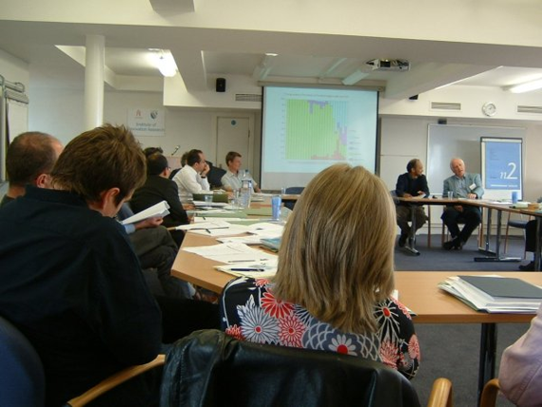
Relating to this last point, it would be useful to determine whether there are different classes of inventions that can be found in the historical record and whether they can be found today and ask thereby whether we can anticipate similar or, because of changing contexts, quite new trajectories for them.
At the same time, there are also always likely to be localised versions of technologies that may differ from that promoted as 'the global standard': these may prevail in a niche market for some time or founder, not because they are necessarily technically less efficient or effective, but because they may relate to existing technologies and social practices less well. Moreover, we need to understand how technological trajectories and path dependencies often depend on the 'co-construction' or co-evolution of new social institutions - such as hybrid regulatory institutions overseeing hybrid bioscience (as in tissue engineering). These in turn, though this was only briefly addressed at the Workshop itself, are anchored in quite distinct national political systems that resource health research and delivery, especially as we move from national socialised to fee-based health care.
What these opening remarks point to is the sense in which - as the Conference hosts, Stan Metcalfe, John Pickstone and their colleagues, stressed - the health innovation system is 'complicated', rather than 'complex'. The latter would suggest a system that is self-transforming, whereas 'complicated' points to an innovation process that is self-organised, that requires the management and resolution of innovation 'problems' across a wide range of actors, who thereby shape the direction in which technologies go. The methodological problem we have is to develop frameworks and the evidence-base in such a way that we, as analysts, can track these problems, these moves over time, and can do so at the appropriate level of empirical granularity. As delegates observed, there are different ways of tracking innovation, of telling an innovation story, and each will throw up specific readings of change: what is important is what questions we are asking of innovation.
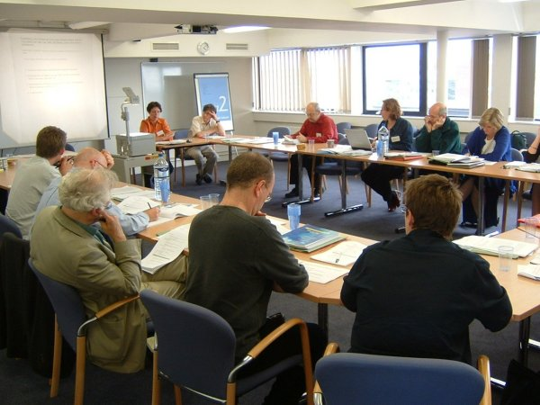
The most important one that began to emerge during the Conference was how can we best discern the direction of health innovation and how determine the quality of the innovation itself. 'Quality' was seen to relate both to sustainable health innovation but also that which might be seen to be demonstrably a (therapeutic, curative, preventative) public good. Herein, as suggested by a number of the participants, lies the possibility of a critical but constructive intervention by social scientists in the health policy arena. Claims made on behalf of novel innovation can be assessed against such criteria.
The Conference pursued this issue further by asking what public health innovation might look like, and how it might compare with private sector-driven innovation? For example, within the UK, is the NHS an excellent vehicle for promoting health invention but not innovation, or is it wrong to see its capacity for mobilising innovation limited in this way? If there were no public sector, is it correct to argue that certain forms of innovation would not have occurred? The papers on vaccines, prosthetics (especially, for example through their tie-in with minimally invasive surgery) and wheelchair design have much to say about this. What types of innovation relatips or networks need to be built to exploit the innovation potential in public health (should, for example, the notion of communities of practice in public health mobilised around an innovation artefact or technique - which acts as a boundary object (Star and Griesemer, 1989) for distinct groups - be worth developing)?
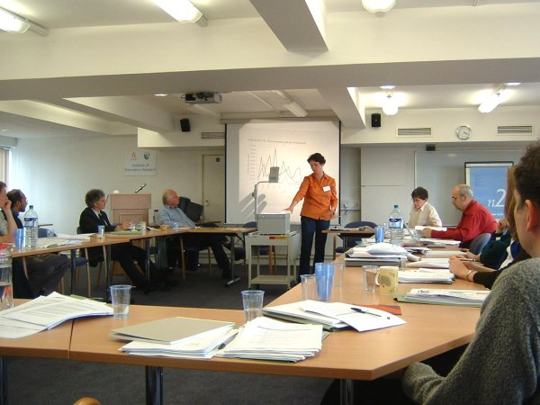
Beyond these broad themes, the debate ranged widely around a number of more specific issues, including:
- What characterises contemporary innovation? : here we drew attention to the increasing influence of formal measures to evaluate health technology (such as the HTA field) and the pre-dominance of evidence-based interventions; to the miniaturisation (via informatics and molecular biology) of research and the spatial and temporal mobility this gives; to the emergence of hybrid forms of public/private innovation within and between countries; and to the growing individualisation and commodification of health care, often framed by professional and state agencies as patient-centred care.
- What is specific to innovation in health?: here the focus is on health technology as not merely the provider of a specific clinical need but also of a means through which populations are subject to surveillance, to the ordering of populations as bodies, and thereby to the huge growth within the health system of an information infrastructure: in the UK, the anticipated arrival of an 'information spine' along which health (and related) data about all UK patients will pass is to become the central channel through which a digital body is to be built. Related to this ordering is the 'regulatory order' that struggles to define boundaries of (acceptable) innovation (e.g. in biological tissues).
- How do firms commodify emerging health innovation and capture its value, especially where technologies are still more aspiration than reality?: the mobilisation of expectations based on anticipated markets - as in genomics for example - is an important topic if we are to understand the strategic positioning of claims seeking support (not least regulatory approval) in the innovation arena; what legitimating strategies are deployed by firms to secure widespread support for new products; how do innovators reposition their technologies ( give them 're-functionality' and them more 'workable') to secure support and stabilise the market for their technologies?
- In what sense is the patient being reconfigured today?: health technologies have always involved forms of corporeal intervention and transgression. Yet technologies are now working in apparently conflicting directions: telemedicine was shown to engender patients who are to be autonomous, yet compliant and remotely 'activated' (through GRID technology); patient carers are caught up in this process at the same time and required to carry an ever-increasing burden of responsibility for health; health and its delivery is more than ever before defined in terms of risk and care algorithms that act as allocators of resource in the health system.
These and other issues ensured that the debate was both fruitful in answering our initial questions but, as ever, opening up new areas for debate. The thirty-eight participants managed to stay for most of the conference, not least because of the added pleasure of the good company, excellent local organisation, and extremely pleasant restaurants we visited in central Manchester.
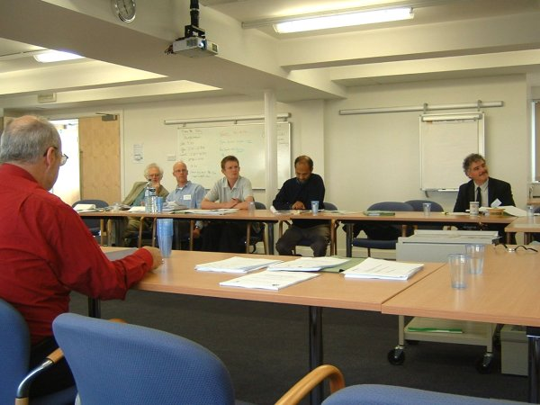
The organisers hope to plan a follow-up event in 2005 that will be linked to a parallel initiative in health sciences. The ESRC IHT Programme Director is also using the insights from the Conference to help develop further plans for a future health technologies programme, with a focus on public health.
Professor Andrew Webster
IHT Programme Director
Further photos and information about the meeting can be found at
http://www.les1.man.ac.uk/cric/workshops/health/photos.htm
References
McKeown, T. (1979) The Role of Medicine, Blackwell, Oxford.
Pavitt, K. (1998) 'Technologies, products and organization in the innovating firm: what Adam Smith tells us and Joseph Schumpeter doesn't, Industrial and Corporate Change, 7: 433-51.
Rogers E. (1983) Diffusion of Innovations. New York: Free Press.
Star, S.L. & Griesemer, J.R. (1989). "Institutional ecology, 'translations' and boundary objects: amateurs and professionals in Berkeley's Museum of Vertebrate Zoology, 1907-39." Social Studies of Science 19, 387-42o.
Webster, A. (2002) 'Innovative health technologies and the social: redefining health, medicine and the body' Current Sociology, vol .50, pp 443-458
Williams, R. and Edge, D. (1996) The social shaping of technology, Research Policy, 25, 865-99.
Ziman, J. (2000) Technological Innovation as an Evolutionary Process, Cambridge: CUP.
